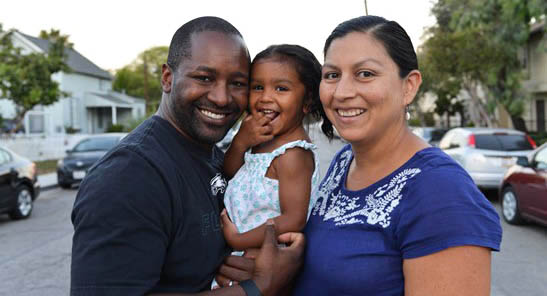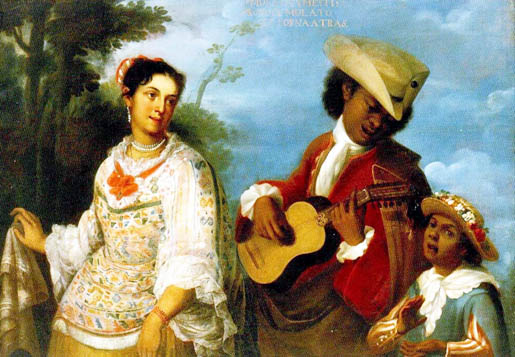The weekly newsletter of the México Solidarity Project
|
January 19, 2022/ This week's issue/ Meizhu Lui, for the editorial team
|
Walter Thompson Hernandez
|
‘Post-Racial’?: The Realities Behind the Rhetoric
|
In 2008, most all of us remember, the election of the first US Black president brought on a wave of self-congratulatory crowing about how we had achieved a “post-racial” society. In México, the declaration of a post-racial society came much earlier, after the Revolution of 1910 created a mestizo national identity.
In México, unlike the US, the Spanish colonialists did not attempt to wipe out the Indigenous peoples. They saw those people as too numerous, too dispersed throughout the territory, and too necessary for work in the mines and fields. Indigenous communities remained large and intact, and the relationship between these communities and the descendants of the colonialists became México’s primary racial contradiction.
In the US, a different set of racial dynamics. The settler states decimated the indigenous Native American tribes and moved the survivors to reservations isolated from white society. The relationship between white master and African slave became the primary racial contradiction, and the legacy of that relationship continues to stain our US history.
Another difference: The United States, with its foundational principle of white superiority, actively enforced the separation of races. No state repealed laws against interracial marriages until California took that step in 1948. The last state to repeal a ban on “miscegenation”? Alabama — in 2000! The Mexican Revolution’s foundational principle, in sharp contrast, holds that race doesn’t matter and actively encourages racial mixing.
We all know well by now how the “post-racial” fantasies of the Obama era collapsed in a blaze of bullets — and a callous knee on George Floyd’s neck. But how has “post-racial” life worked out in México? We begin this week a two-part interview with the distinguished scholar Monica Moreno Figueroa on just how the “universalist” approach has affected non-white people in México, particularly the nation’s Black population.
|
Don’t miss an issue. Subscribe to the weekly México Solidarity Bulletin!
|
Blacks, Mestizos, and Mestizaje: The Complex Backstory
|
Mónica Moreno Figueroa, a Black-mestiza sociologist at the UK’s University of Cambridge and a social sciences fellow at the University’s Downing College, has focused her research on the intersectional lived experience of "race” and racism in México and Latin America. Her research also centers on antiracism and academic activism, feminist theory, and the interconnections between beauty, emotions, and racism. An award-winning teacher, Moreno Figueroa has been a pioneering advocate of education as a vehicle for social change. Since 2010 she’s helped lead the Collective for the Elimination of Racism in Mexico, COPERA, a group dedicated to making racism a higher-profile public issue. This coming march, the University of Pittsburgh Press will publish her latest book, Against Racism: Organizing for Social Change in Latin America.
|
Unlike the English settlers in North America anxious about their racial purity, Spanish colonialists married and mixed both freely and violently with the indigenous population beginning all the way back to the first conquistador. What does mestizo signify?
Monica Moreno Figueroa: Under Spanish rule, mestizo meant someone of mixed Spanish and Indigenous ancestry. New Spain also had enslaved African people, categorized as Black, who also mixed with Indigenous and whites. These mixed-race children did not carry the mestizo label — mulatto would be more common — and they entered into an intricate caste system that placed people into a hierarchy based on their proportion of Spanish blood, with Spanish at the top and Black at the bottom.
Mixing aimed to achieve whiteness. Here’s how it worked: The mixture between a white Spaniard and an Indigenous woman produced a mestizo offspring. The offspring of a mestizo and a white Spaniard created a castizo. A castizo and a white Spaniard would produce a white Spaniard. That is, in three generations, an Indigenous line could become fully Spanish and white and receive what was called the “certificate of blood purity” — certificado de limpieza de sangre — and secure some sense of social mobility and inclusion in the colonial order.
|
Did the definition of mestizo change after the Mexican Revolution?
México experienced centuries of mixing before colonial rule ended. With the abolition of slavery in 1829, the caste system ended too. All castes became one big mestizo group. And after the Mexican Revolution in 1910, mestizo was adopted as the national identity and became a building block of the new nation, to supposedly create unity without racial distinctions. The mestizo became the Mexican.
|
De mulato y mestiza, produce mulato, es torna atrás (Juan Rodriguez Juárez, ca. 1715)
|
So when we talk about mestizos and the process of mixture, mestizaje, we refer not just to a historical moment of conquest, violent colonial rule, and racial and cultural mixture, but also to a conscious ideological and political project of national formation in the 19th and 20th centuries.
After México abolished slavery, did Blacks fully integrate into Mexican society?
Black people made up a small percentage of the population, and they became dispersed throughout society. In some places, they played a middle role between Spanish and Indigenous peoples and engaged in a wide variety of service roles. In others, they formed independent freed communities in isolated parts of the country. The impossibility of having Black republics, like the repúblicas de indios, the whitening logic of mestizaje, and anti-Black sentiment left many Black people choosing to accept mixture as a way of securing their livelihoods.
But besides having those historical meanings, mestizaje has also been a racial project that continues to organize how racism works. Mestizaje, in its simplest form, makes for an assimilation project that encourages mixture as a way of becoming included in the nation. Mestizaje promotes whitening and cultural homogenizing while, at the same time, excluding the complex reality of the Indigenous and Black nations and peoples that ended up in what is now México.
Do people today recognize that racism and discrimination based on notions of race and skin color exist in México?
The Zapatista rebellion in 1994 awakened Indigenous peoples’ anger, and their uprising kicked off a Black mobilization as well. In that moment, all of México could clearly see that racial and cultural differences matter. For the first time, darker peoples realized that the promise of an integrated, meritocratic, and inclusive nation came at a huge cost to their own identities, languages, and cultures. The mestizaje project included “whitening your mindset,” and that became no longer acceptable.
Since 1994 the Zapatistas have led the way for seriously questioning the capitalist and meritocratic assumptions of the mestizaje national project. And since then community activists, public intellectuals, and academics have raised their voices, expanded their studies, and sharpened public awareness of our deeply unequal Mexican society and its racist underpinnings.
The second part of this interview with Mónica Moreno Figueroa will appear next week.
|
A Young Artist, a Fresh Take on Ancient Mexican Tropes
|
Pavel Acevedo was born in Oaxaca City, a well-known center for printmaking within México. Acevedo now does his creating as a member of the inaugural residency program at Self Help Graphics & Art in Los Angeles, a community arts center currently presenting its first exhibit, The Shell in the Clouds (El Caparazón en las Nubes).
|
Acevedo’s work combines historical, ancient Mexican tropes with images and modern stories of young immigrants and city life, bridging the two phases of his life. His portraits convey honesty and affection.
|
One of my favorite Acevedo pieces, Greed from 2020, expresses the repulsion I feel for the deadly sin that causes so much grief in the world. The tongue sticking out, the hand always grasping for more, the horns — all appear hidden behind a benign, pretty mask.
|
Acevedo’s Nature’s Sermon sends chills up your spine with its message of warning. Always present in his work: the expectation and hope that we can do better, as in his Utopia. By mixing all the experiences of his young life Acevedo offers us a printmaker’s strong graphic vision: Keep hope alive!
|
Pavel Acevedo on his own work, from a Self Help Graphics interview this past December with Marvella Muro: “The images created in this series of prints are a celebration of the rebelliousness that is part of ourselves. I’ve been part of protests since I lived in Oaxaca and seeing them in the US is inspiring… Protests cross borders and inspire others.”
You can follow Pavel Acevedo on Instagram at @pavel_acevdo and Twitter at @redynegro — and Facebook as well.
|
Recent news reports and commentaries, from progressive and mainstream media,
on life and struggles on both sides of the US-México border
John Ackerman, La sucesión adelantada, La Jornada. En lugar de cimentar su liderazgo en los acuerdos palaciegos y las negociaciones secretas de espaldas a la población, AMLO busca garantizar su legado histórico por medio del sólido arraigo popular de su proyecto de gobierno.
Thomas Pallini, We visited the community living in the shadow of an Amazon warehouse in México, and asked residents what they thought of their new neighbor, Business Insider. Amazon is celebrating the opening of a new fulfillment center in Tijuana. The warehouse stands next to a makeshift community of shanty homes.
Ryan Gilbey, Guillermo Del Toro: ‘I saw real corpses when I was growing up in Mexico,’ Guardian. This Mexican-born film director’s stop-motion animated Pinocchio, set in Mussolini’s Italy, will premiere on Netflix later this year.
Nacha Cattan, México’s Record Remittances Are Helping to Prevent Consumer Crisis, AMLO Says, Bloomberg. Transfers sent into México rose 27 percent in 2021.
Ulises Rodríguez López, AMLO más popular que nunca: lo respaldan el 70% de los mexicanos, Polemón. Según el muestreo de la agencia especializada en estudios de opinión, la aprobación de López Obrador incrementó de 69.4% a mediados de diciembre de 2021 a 70.6% para el día de hoy.
Ben Wein, French clothing line under fire for 'mocking' Zapotec woman in Oaxaca, México News Daily. The Mexican government is considering legal action after Sézane employees filmed an Indigenous woman in Oaxaca dancing in their clothing.
|
The Mexico Solidarity Project brings together activists from various socialist and left organizations and individuals committed to worker and global justice who see the 2018 election of Andrés Manuel López Obrador as president of México as a watershed moment. AMLO and his progressive Morena party aim to end generations of corruption, impoverishment, and subservience to US interests. Our Project supports not just Morena, but all Mexicans struggling for basic rights, and opposes US efforts to undermine organizing and México’s national sovereignty.
Editorial committee: Meizhu Lui, Bruce Hobson, Bill Gallegos, Sam Pizzigati, Courtney Childs, Victoria Hamlin. To give feedback or get involved, drop us an email!
|
Web page and application support for the México Solidarity Project from NOVA Web Development, a democratically run, worker-owned and operated cooperative focused on developing free software tools for progressive organizations.
|
|












